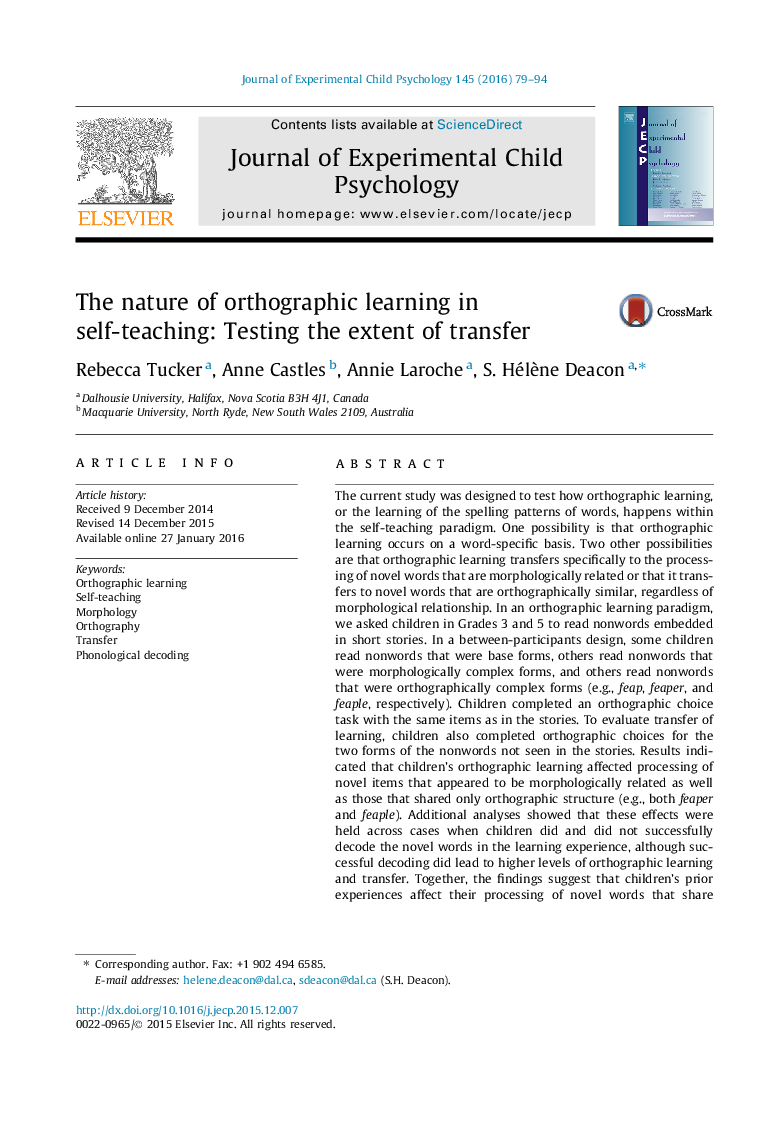| کد مقاله | کد نشریه | سال انتشار | مقاله انگلیسی | نسخه تمام متن |
|---|---|---|---|---|
| 917912 | 1473467 | 2016 | 16 صفحه PDF | دانلود رایگان |
• We adapted the self-teaching paradigm to test for transfer of orthographic learning.
• Children in Grades 3 & 5 learned nonwords they saw embedded in short stories.
• Children transferred that learning to the processing of novel items.
• Transfer of learning occurred for any items that shared an orthographic structure.
• Results were consistent regardless of nonword decoding accuracy during story reading.
• These findings suggest a role for orthographic analogies in the self-teaching process.
The current study was designed to test how orthographic learning, or the learning of the spelling patterns of words, happens within the self-teaching paradigm. One possibility is that orthographic learning occurs on a word-specific basis. Two other possibilities are that orthographic learning transfers specifically to the processing of novel words that are morphologically related or that it transfers to novel words that are orthographically similar, regardless of morphological relationship. In an orthographic learning paradigm, we asked children in Grades 3 and 5 to read nonwords embedded in short stories. In a between-participants design, some children read nonwords that were base forms, others read nonwords that were morphologically complex forms, and others read nonwords that were orthographically complex forms (e.g., feap, feaper, and feaple, respectively). Children completed an orthographic choice task with the same items as in the stories. To evaluate transfer of learning, children also completed orthographic choices for the two forms of the nonwords not seen in the stories. Results indicated that children’s orthographic learning affected processing of novel items that appeared to be morphologically related as well as those that shared only orthographic structure (e.g., both feaper and feaple). Additional analyses showed that these effects were held across cases when children did and did not successfully decode the novel words in the learning experience, although successful decoding did lead to higher levels of orthographic learning and transfer. Together, the findings suggest that children’s prior experiences affect their processing of novel words that share orthographic similarity, likely reflecting a role for orthographic analogies in the self-teaching process.
Journal: Journal of Experimental Child Psychology - Volume 145, May 2016, Pages 79–94
